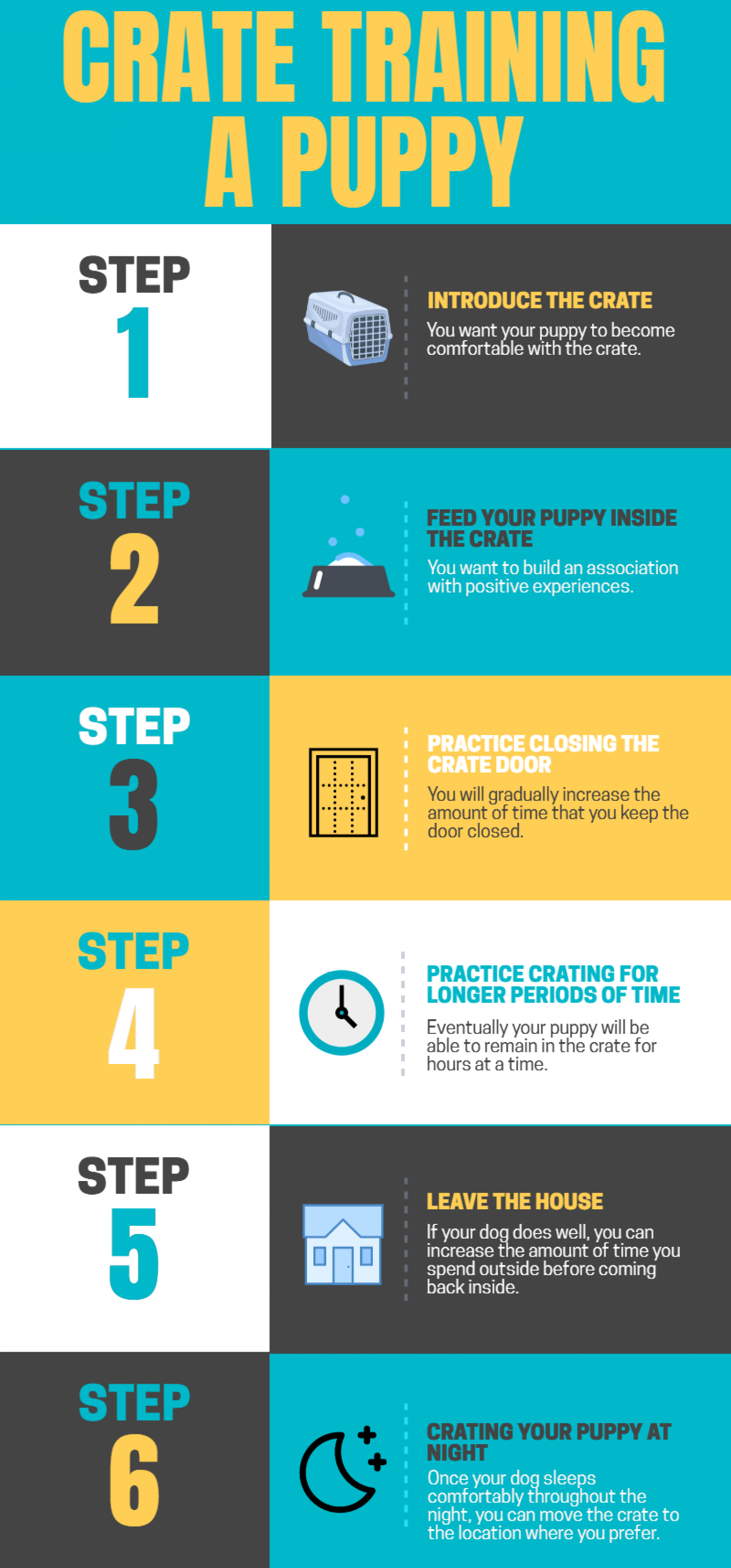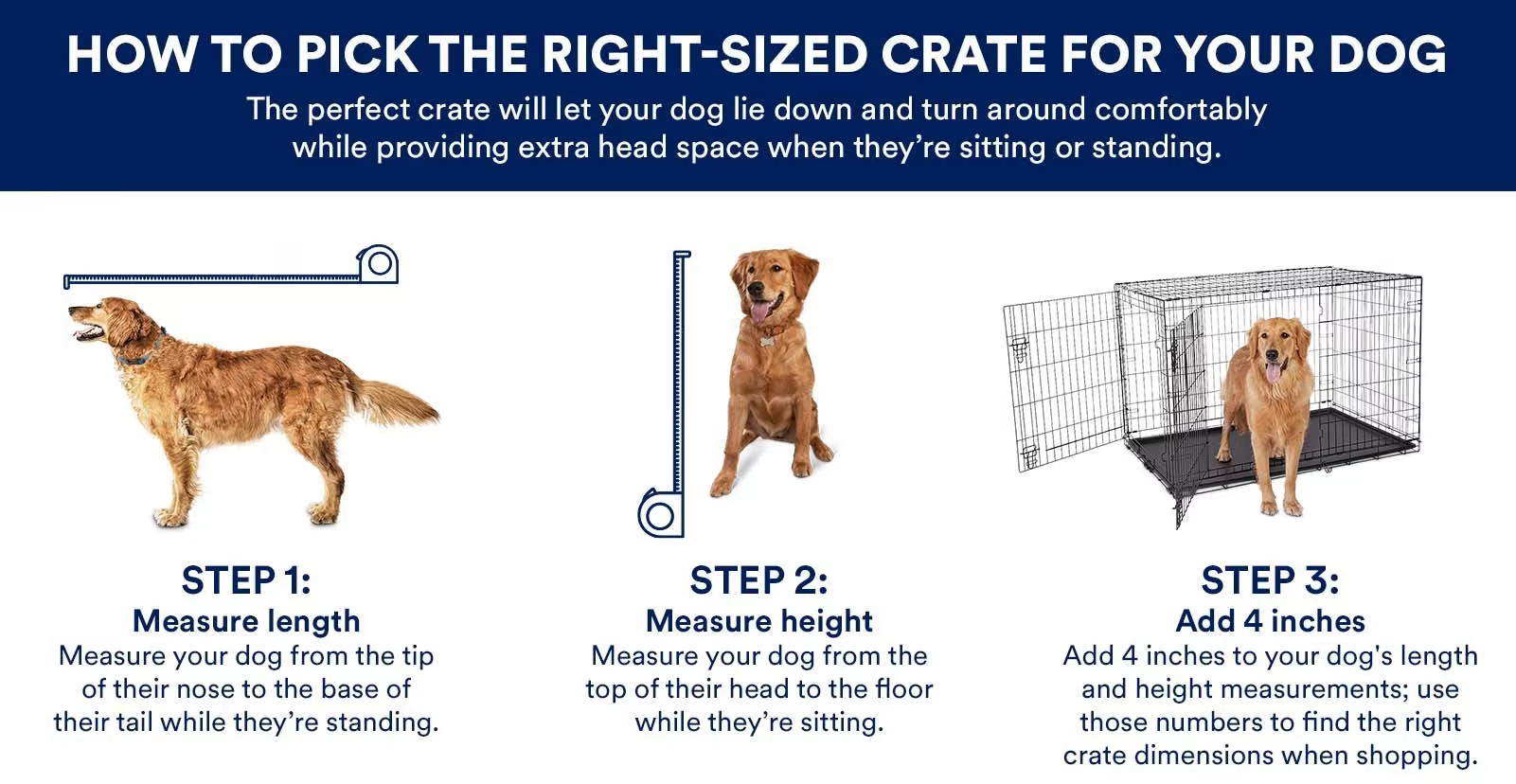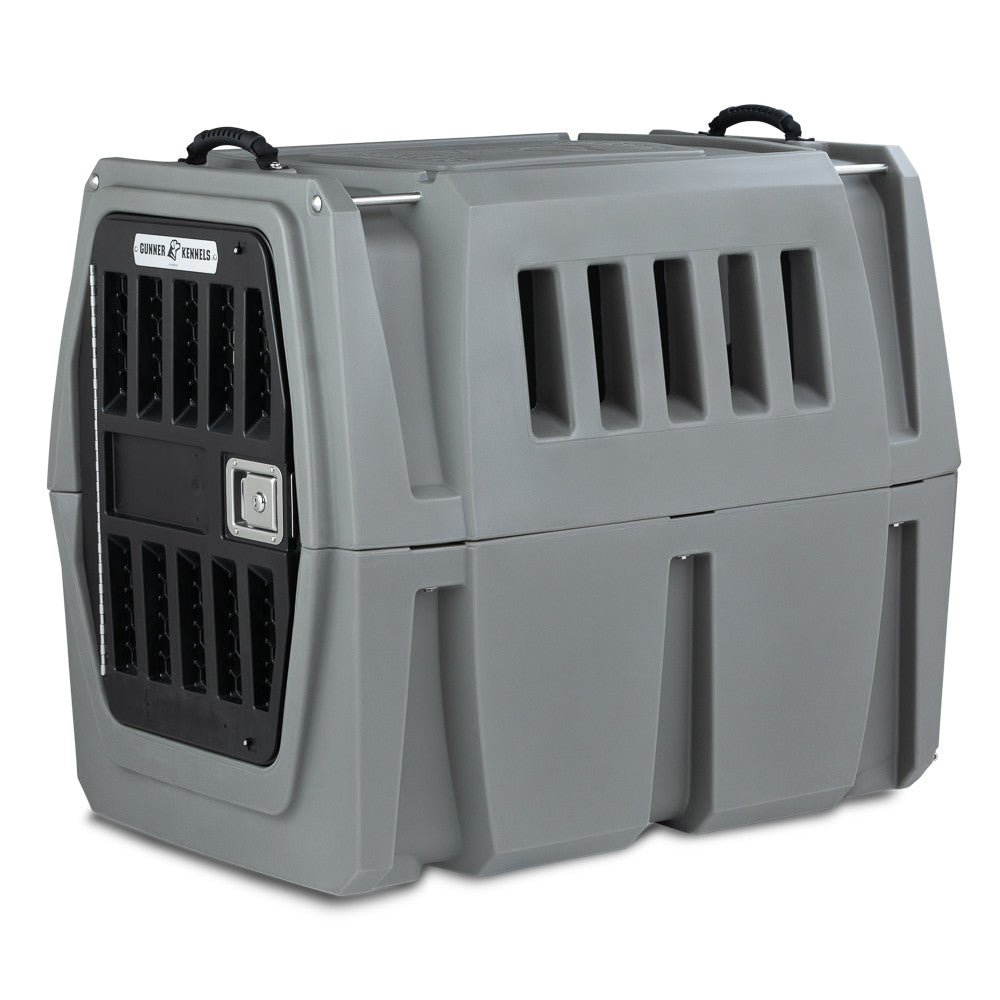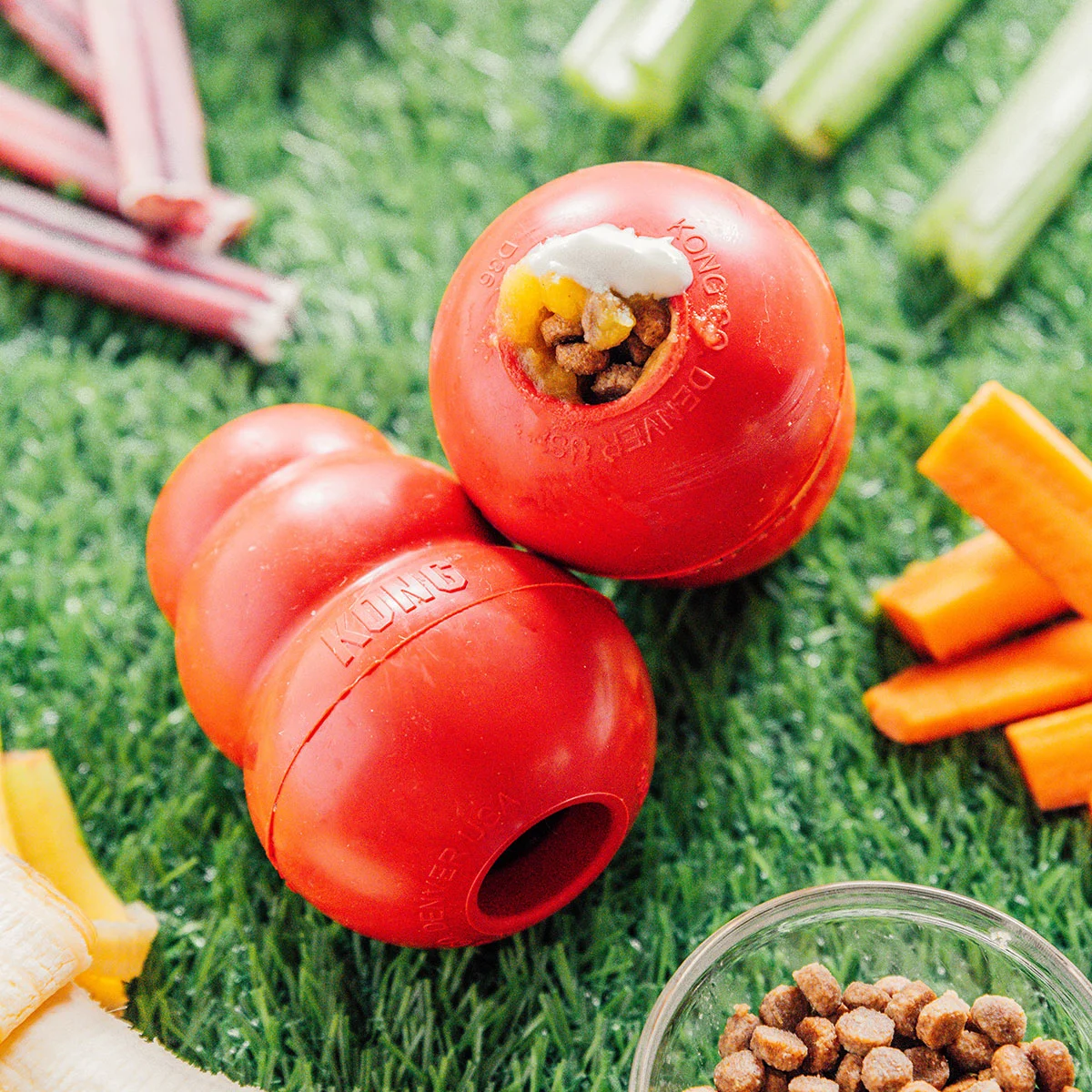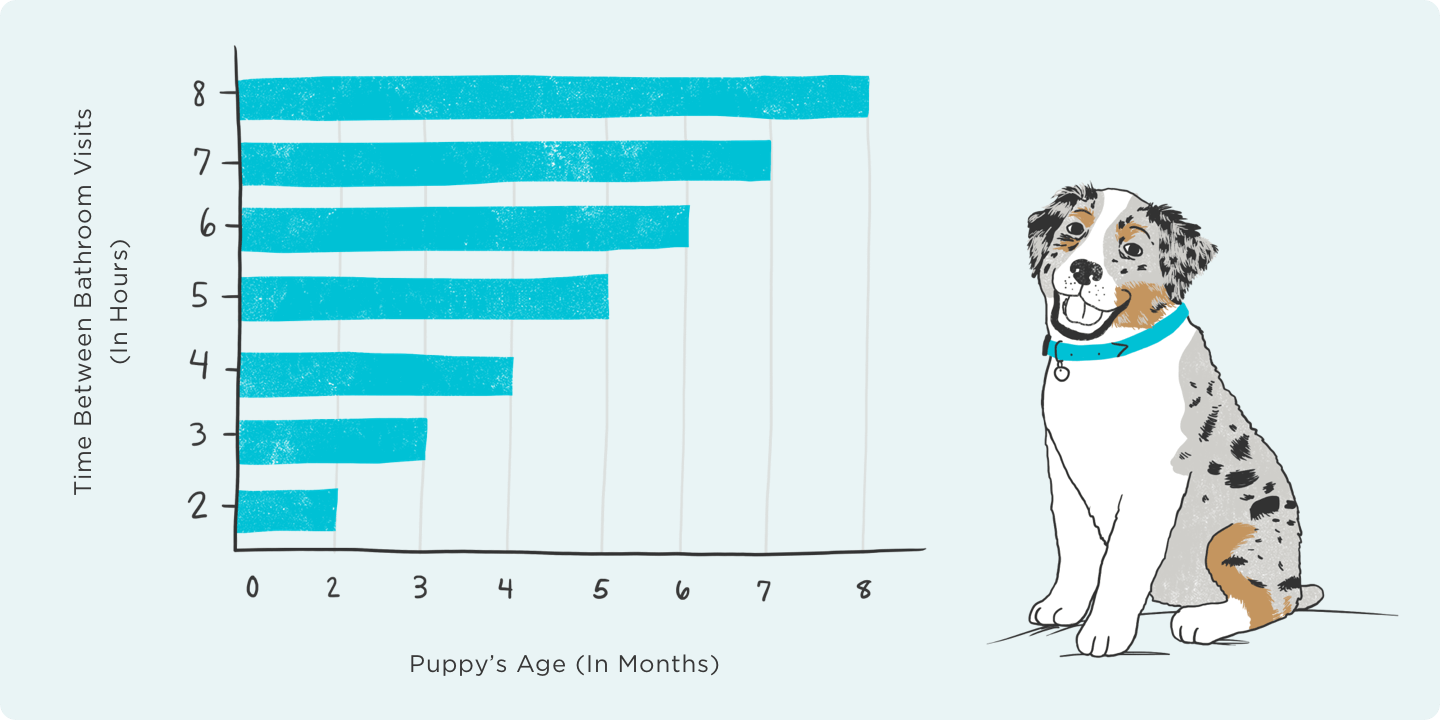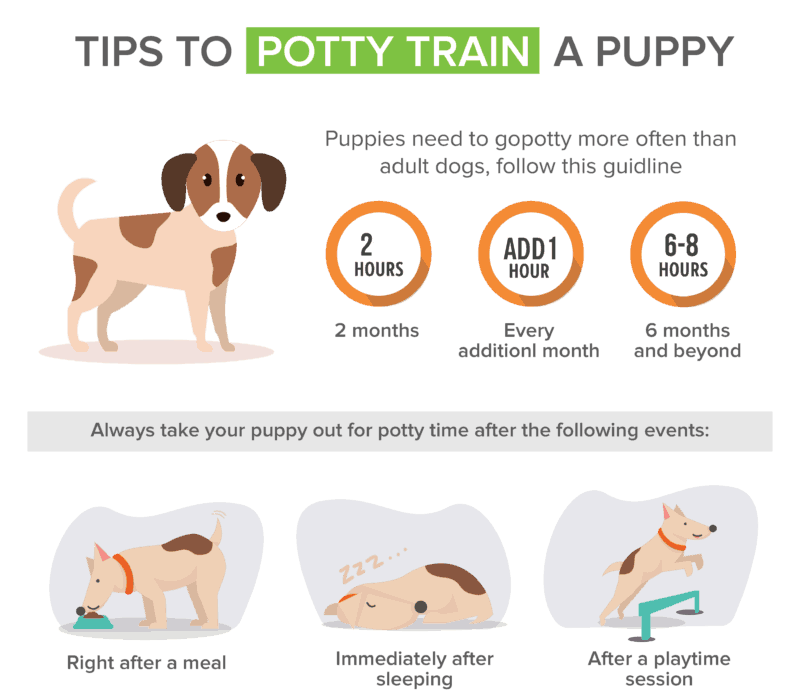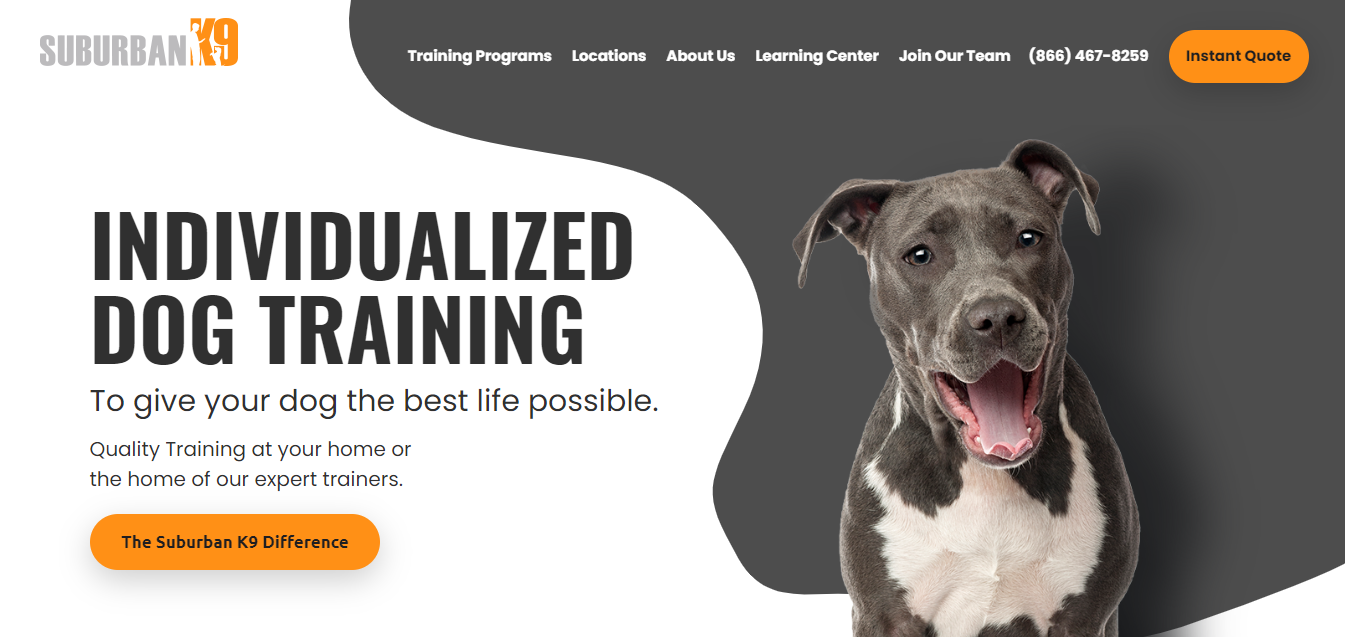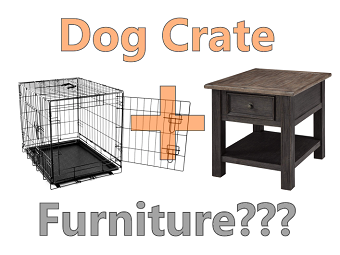So you just cringed at the word crate. Even if you didn't, we know a lot of people do. Let’s make one thing clear – crating is not caging up your puppy. It is an important part of raising a well-behaved, secure, and happy pup. But know that they are not born with the etiquette of living in a dog crate. So as a dog parent, how to crate train a puppy is one of your main priorities.
Crate training is the beginning of a happy relationship between you and your puppy. But the journey to reach that goal can be quite frustrating, especially when we talk about nighttime crate training… unless you follow the right guidance.
Getting hold of the proper expertise coming from seasoned dog experts is nothing short of hitting a gold mine, and you managed to do exactly that here.
Our article is a full-on guide (we promise you a no-fuss journey here) to crate training a puppy at night with guaranteed results. By the time you finish reading the last line, you will be ready to take on the world of puppy crate training like a champ.
The 4 Crucial Roles Of Nighttime Crate Training
We will cover the steps to successful nighttime crate training in the next section in detail. Because first, we need to enlighten pet parents like you about what perks night time crate training brings to the table.
I. Provides Safety & Security
A crate serves as a secure den for your puppy. This is where they can retreat if feeling overwhelmed or anxious. It keeps them from wandering off unsupervised at nighttime when everyone is supposed to be sleeping – saving them from potential accidents. When a puppy is young, leaving them out at night would be the same as leaving a baby out of their crib at night.
II. Preventing Destructive Behavior
Some dogs have behavioral issues that can cause excessive chewing or any other kind of destruction. Crate training them means limiting their horizon to create havoc. Since nighttime is unsupervised time, confinement is the safest option to prevent destructive behavior and potential hazards.
III. Helpful In Night Time Potty Training
The best tool to potty train a puppy at night is a crate. Dogs have a natural instinct not to soil their place of sleep. Based on this, a crate helps dogs control their bladder and bowel movements. Since they associate their crate with their den, they do their best not to soil it, thus aiding in potty training.
If you are looking for help with potty training your puppy, try our Potty Training Academy. Our expert trainers will give you all the potty training tips and tricks that you need to stop puppy accidents before they happen.
IV. Lets You Have A Peaceful Night Snooze
Nighttime crate training makes sure that you and your pup snooze like a pair of synchronized snore machines. A cozy den gives your puppy a safe and secure space that relaxes them and keeps those midnight mischief urges at bay. In return, you get to have that undisturbed slumber you were aching for. Sweet dreams guaranteed!
The Golden Rules Of Crate Training You Should Never Forget
Crate training your pup for the day routine and night routine has different approaches but the basics remain the same for both. So before we jump in into the whole night training process, here is a little reinforcement of the basics of crate training.
See if you are following these important rules.
1. Not Using It As A Punishment
A crate should not be used as a punishment. Period. You don't want to associate their “me time” nook with fear. So it should never be used as a place of penalizing or as a direct result of any wrongdoing on their part.
Using a crate this way will have a negative effect. This might accidentally make our puppies dislike or even fear the crate when we're actually trying to teach them that it's a cozy and comfortable spot.
Here’s another way to go about it. If you know you're going to be super busy and won't have time to keep an eye on your puppy, it's best to put them in their crate ahead of time. This way, you're stopping any naughty shenanigans before they happen, instead of reacting afterward and punishing them by putting them in the crate.
2. Choosing The Right Crate Size
This is crucial and can make or break the situation. Yes, we are talking about the size. Make sure your dog is safe and comfortable while choosing the right size. The best way is to measure your dog from the tip of the nose to the end of the tail.
Similarly, in a sitting position, measure them from the floor to the top of the head. Add 4 inches to both dimensions. A crate should be big enough for your puppy to sit, stand, and turn comfortably. That’s it. Bigger space means more chances of accidents that you intend to avoid.
Some crates come with a handy divider. When you have a puppy, you can use the divider to create a smaller space inside the crate. This helps with potty training by limiting their movement area. Once they're fully grown, you can easily remove the divider and give them the whole crate to stretch out and relax in.
Some Crates To Consider
Full Review and Pressure Test of the Gunner G1 on our site and think this is a great option for your pup! It is durable, easy to clean and comes in great color options.
 5 Star Crash Tested. Proven to save dogs' lives in real accidents.
5 Star Crash Tested. Proven to save dogs' lives in real accidents. Double Impact Protection. Market's only double-walled kennel.
Double Impact Protection. Market's only double-walled kennel. 20% Less Energy. Your dog expends less energy to stay warm than other leading kennels.
20% Less Energy. Your dog expends less energy to stay warm than other leading kennels. Lifetime Guarantee. American Made. Built to last.
Lifetime Guarantee. American Made. Built to last.- Easy-Grip Handle
- Keyed Paddle Latching Door
- Large Ventilation Holes -16 per side in Small and Medium - 32 Total -20 per side in Large and X-Large - 40 Total
- Easy-to-Clean Drain Hole
- 4 Sizes to meet your needs
- Sturdy Plastic Dog Crate: Securely and safely protect your pet and your home with this dog crate
- Suitable for Dogs of All Sizes: 5 different sizes to choose from
- Airline Friendly Dog Carrier: This pet carrier meets most airline cargo specifications
- Easy to Keep Clean: Sturdy plastic shell on this dog carrier is easy to clean
- Indestructible Heavy Duty Dog Crate The LMEBERI 48 inch dog crate is a 20-gauge steel crate with reinforced 0.5-inch-diameter steel tubes.
- Safe And Convenient Design This large crate is built from steel and has a non-toxic, anti-rust finish.
- Easy To Clean The floor grate has a slide-out tray underneath, which allows for easy clean up.
- Easy To Assemble & Move The four caster wheels on the bottom make moving a breeze and are also lockable.
- Great Heavy Duty Dog Crate For The Money This dog cage is perfect for dogs that have broken out of other crates.
3. No Leash Rule Inside
Your dog needs to be in its crate naked. Yes, you heard that right. That means no leashes, collars, tags, or not even those cute doggo hoodies that say “My master is the best”.
Your puppy is going to be unattended in the crate for the night. So you wouldn't want any accident, like a tag getting caught in the crate, happening that could take a life-threatening turn. Similarly, leave no stuff inside that can become the cause of the choking accident. Precaution is better than regret.
4. How Long Can You Keep Your Dog Inside The Crate?
The duration for your pup to stay in the crate varies with daytime and nighttime scenarios. But you need to find the sweet spot in both cases. Not too much, not too little – just the right amount.
Generally speaking, most young puppies can take about 6-8 hours of nighttime crating if they are around 16 weeks old. Similarly, their stay shouldn’t exceed 2 hours in a stretch during the daytime. For adult dogs, it shouldn’t exceed 4 hours during the day.
8 No-Fuss Steps To Effortlessly Crate Train Your Puppy At Night
Even if your furball is used to spending time in its crate, sleeping soundly in the crate throughout the night is a totally different ball game. It may seem hard from the outside but once you start following these steps, you will be on a roll. Here is all that you need to know about the crate training process.
1. Choosing The Right Spot
The right location will help the training process go smoothly. The selected place should be disturbance free. No flashing lights, no movement, loud noise, or any other kind of distraction. The goal is to develop a routine for a minimum of 6 to 8 hours of undisturbed sleep.
When we talk about crate training puppies at night, placing the crate in your bedroom is the most valid option. Hear us out why. Puppies are small and have been recently separated from their mother and siblings. Keeping the crate in your room near your bed can make them less anxious or fearful of the new place. What is even better is that you can calmly lull them to sleep if they wake up during the night.
After a few nights, you can start the gradual transition. Start moving it away from the bed every night and then eventually to the desired location. If you want them to feel at home, change their place of sleep occasionally so they get acquainted with every nook and corner of the house.
2. Setting Up The Crate
Your dog’s crate is supposed to be its comfort zone, a haven it can retreat to and feel at ease. Speaking of comfort, the crate could be set up with a cushiony base for your pup to sleep on, a blanket, and if you want to go lavish, add a pillow. Now when you are adding these layers keep the current weather situation in mind.
Just a heads-up! If your puppy happens to be struggling with some behavioral issues, it's best to hold off on putting any soft bedding in their crate until those issues are sorted out. Of course, you can still make sure they're comfy and content in other ways but keep an eye out for any mischievous behavior like chewing or munching on their bedding. If that does happen, remove the bedding right away to make sure they stay safe and sound.
Foam-based mattresses tend to get hotter. So if you have summers, add a light layer that provides comfort but doesn't raise the temperature. The whole point of setting up a crate is to make things comfortable for a sound snooze. If your puppy is hot, it won't sleep through the night or may want to step out of the crate.
While setting up the crate is important, making sure that it retains all the safety measures is even more crucial. Make sure that these provisions are non-toxic.
Puppies tend to start chewing when anxiety hits. Add a chewy toy that gets your pup’s attention and chomps.
Pro Advice: Get a Kong toy and freeze some healthy snacks like peanut butter in it for a few hours before placing it in the crate. Your pupper will love it and will readily spend more time in its den.
Options for a Cozy Crate

The Kong is a great option for placing in the crate with your pup to keep them busy and give them a positive treat.
3. Following The No Water & Food Policy Before Bed
Unlike older dogs, puppies can't hold their bladder for too long. It’s one fact that every dog owner should be aware of, if not already familiar with. That means when they drink water, they need to relieve themselves soon after that.
How soon you may ask? Well, the bladder control duration is directly related to the dog’s age. A 2-month-old will have to pee after 2 hours. So you get the picture here. The best is to schedule meals and water intake in a way that there is a 2-hour gap between the last intake and sleep time. This ensures nighttime crating success.
Not only is it good for building up a routine but this gap is very positive for your puppy's digestive health as well. This also gives them ample time to empty their bladder and bowel before finally dozing off.
4. Scheduling Playtime Correctly
You want to wear your puppy down but you don't want to have an endorphin overload. There is a thin line between these 2 and the only thing that will help you settle it down is scheduling the outdoor activity time correctly.
For starters, don't choose high-energy activities like fetch or tug of war during nighttime. These cause overstimulation. Also, exercising will make them thirsty and the last thing you would want is for them to sleep with a full bladder. Hyperactive playtime should be scheduled for the morning routine.
You can opt for a simple walk (nothing rigorous) or even mental enrichment activities. Doggo puzzles or any other interactive toys can help them calm down and zonk out.
Keep the evening activities scheduled a good 3 to 4 hours before sleeping for 2 reasons:
- Water intake settles down before sleeping
- To keep any hormonal release at bay that may make them excited
5. Using Calming Strategies
If you have an excited puppy at hand, you can take the help of different calming methods. Yes, they work – even on dogs, especially in winding down routines.
Look at the body language. Does it show any signs of separation anxiety or restlessness like panting, heavy drooling, or pacing in circles? Start by petting and brushing. Owner’s touch is the best way to calm a pup down.
Ever heard of the T-Touch technique? It's a nifty trick for dog owners that works wonders. Start by placing your hand on your pup's shoulder and make small circles in a clockwise direction. Gradually move your hand along the body, repeating the circular motion.
You can also use aromatherapy. Pheromone diffusers are great for relaxing puppies. They emit a synthetic pheromone that the mommy dog releases when it is nursing its litter. Amazing right?
Calming music is also effective in zoning out hyper dogs. Not a fan of it? Use white noise for muffling noise.
6. Handling Call Of Nature
Your last job before closing the crate gate – helping them empty their bladder. They had their meal at least 2 hours back, so they had ample time to digest it. Do the last potty break and you’re done.
Now you will have to set an alarm for a middle-of-the-night potty call. Your puppy needs these midnight breaks until it reaches the age of 16 to 20 weeks. But remember, every puppy is unique so this time frame can vary.
Here's a useful tip if you have two people sharing the puppy's responsibilities. You can try staggering your sleep schedule a bit. One of you can hit the hay early while the other stays up a little longer. This way, you can take turns taking the puppy out for bathroom breaks every 2 hours and still manage to catch 6-7 hours of shut-eye each night.
If your puppy gets a good night’s sleep, the potty break duration during the day will also get extended. This is exactly why we emphasize working toward undisturbed sleep for your pup. Gradually, this helps them learn about bladder control more and more.
7. Dealing With Whining & Barking
Brace yourself for the toughest part of crate training your pup at night. This is when you are done with all the preliminaries and you finally close the crate door and shut the lights off. Since the surroundings are new, chances are your puppy won't let you have it easy and will start creating a fuss by whining and barking.
Now it's up to you how you decode the sounds and act accordingly. It can be because of anxiety or a call of nature. Here is a low down on barking sounds and how to deal with them.
- Demand barking is purely blackmailing. Puppies are smart and they somehow learn that this behavior might bring you over to them and let them out. Demand barking is repetitive followed by eyes being fixed on you while awaiting your next move.
- Distress barking is common when a puppy is new to the place or is uneasy because of the call of nature. It is usually high-pitched and continuous (think howling or long periods of whining). It can be seen paired with consistent circling, trying to escape, or excessive licking.
How to handle: First check if it's time for your puppy to use the loo. If it is, without any interaction, take your puppy to eliminate. Once done, place it back in the crate without making eye contact.
If they still whine or bark, you have to act smart and handle it well. Sit quietly and give them a few minutes to settle. If it continues, you can either soothe with your calm voice or throw in a comfort toy that emits warmth. Stick to these strategies, be firm, and do not give in.
8. Practicing Consistency & Patience
Neglecting this last step is just criminal in any training method you follow. To crate-train your dog, this is something that needs to be carried throughout the training process.
Practicing consistency is the key to success here. What consistency does is it instills habits. It helps establish a predictable routine for your puppy which needs to be followed every day, every time without any deterioration. This will help you reinforce the training process in your puppy’s brain.
But you know what, consistency can only be observed in a routine when you will keep your patience. Remember there will be hiccups in the nighttime crate training. There might be piddling accidents too. Keep the frustration at bay and stay calm.
How Suburban K9’s Expertise Can Help You Crate Train Your Puppy At Night
Our team at Suburban K9 specializes in delivering highly effective and immersive in-house training classes designed to expedite nighttime crate training for your beloved puppy.
We have certified trainers who understand that every young pup possesses unique characteristics and behaviors. That's why we take a personalized approach, tailoring the training experience to cater to your puppy's individual needs and temperament.
Through our in-home training, we bring the expertise right to your doorstep. We create a personalized plan that includes effective crate training techniques, rewards, comforting routines, and clear communication. It's all about helping your pup feel secure, relaxed, and, most importantly, accident-free throughout the night.
At Suburban K9, we don't just stick to positive reinforcement alone in our in-home training. We have a balanced training approach that teaches your dog the right way to behave when it comes to night crate training.
Relying solely on positive reinforcement for nighttime crate training may fall short of addressing the specific needs of your puppy during the darker hours and they might not grasp the concept of consequences for breaking the rules.
That's where our balanced training steps in. We make sure to set and enforce the rules while gently guiding your pup, without ever resorting to any harsh or inhumane techniques. It's all about finding that perfect balance for effective and compassionate training.
Conclusion
We feel the frustration and exhaustion every new puppy owner faces when going through various training regimes. Be it potty training or how to crate train a puppy, unless you have foolproof steps to follow, you aren’t going anywhere. Even the right guidance becomes a dud unless you put in your share of dedication and perseverance.
Remember, if your dog has a previous history of negative association with the crate, the progress can be slow but will still require your full dedication – maybe even more.
At Suburban K9, we house a team of professional dog trainers that offer services not only for your dogs but for you as well. With our proven balanced methods and personalized approach, we'll transform your pup's crate into a cozy sanctuary they'll adore. No more barking, whining, or potty accidents to worry about.
It's time to reclaim your sleep and wake up to peaceful mornings. Let's make night time crate training a breeze for both you and your furry friend. Book a consultation with us today to see our magic.
The article above contains Affiliate Links from Amazon and other companies. If you visit their site and buy the product, we will get a small commission. Please know that we only recommend products we truly love and would never recommend a product we don't think is incredible. We look at and try hundreds of products before we ever recommend them to our clients!
